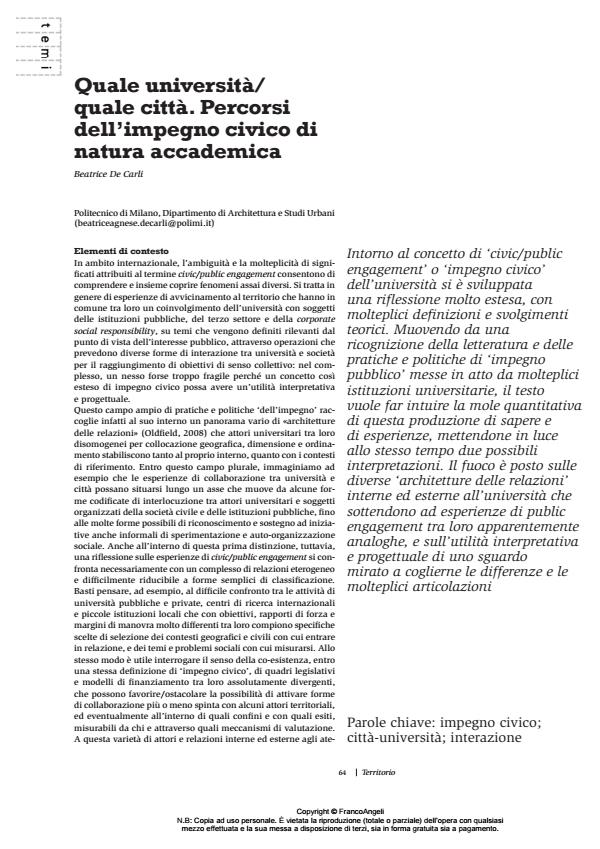Quale università/ quale città. Percorsi dell’impegno civico di natura accademica
Titolo Rivista TERRITORIO
Autori/Curatori Beatrice De Carli
Anno di pubblicazione 2013 Fascicolo 2013/66
Lingua Italiano Numero pagine 5 P. 64-68 Dimensione file 147 KB
DOI 10.3280/TR2013-066014
Il DOI è il codice a barre della proprietà intellettuale: per saperne di più
clicca qui
Qui sotto puoi vedere in anteprima la prima pagina di questo articolo.
Se questo articolo ti interessa, lo puoi acquistare (e scaricare in formato pdf) seguendo le facili indicazioni per acquistare il download credit. Acquista Download Credits per scaricare questo Articolo in formato PDF

FrancoAngeli è membro della Publishers International Linking Association, Inc (PILA)associazione indipendente e non profit per facilitare (attraverso i servizi tecnologici implementati da CrossRef.org) l’accesso degli studiosi ai contenuti digitali nelle pubblicazioni professionali e scientifiche
Very extensive discussion has developed around the concept of ‘civic/public engagement’ or ‘civic commitment’, with a great variety of definitions and theoretical approaches. The paper starts with a survey of the literature and of the ‘public commitment’ practices and policies currently pursued by many universities and then seeks to convey an idea of the huge quantity of this production of knowledge and experiences, highlighting at same time two possible interpretations. The focus is on the different ‘relationship architectures’ inside and outside universities which underlie public engagement experiences that are apparently similar to each other and also on the usefulness to interpretation and planning of an eye that seeks to grasp the differences and the great variety.
Parole chiave:Civic commitment; city-university; interaction
- Ricerca-azione e università. Produzione di conoscenza, inclusività e diritti Francesca Cognetti, in TERRITORIO 78/2016 pp.40
DOI: 10.3280/TR2016-078004
Beatrice De Carli, Quale università/ quale città. Percorsi dell’impegno civico di natura accademica in "TERRITORIO" 66/2013, pp 64-68, DOI: 10.3280/TR2013-066014